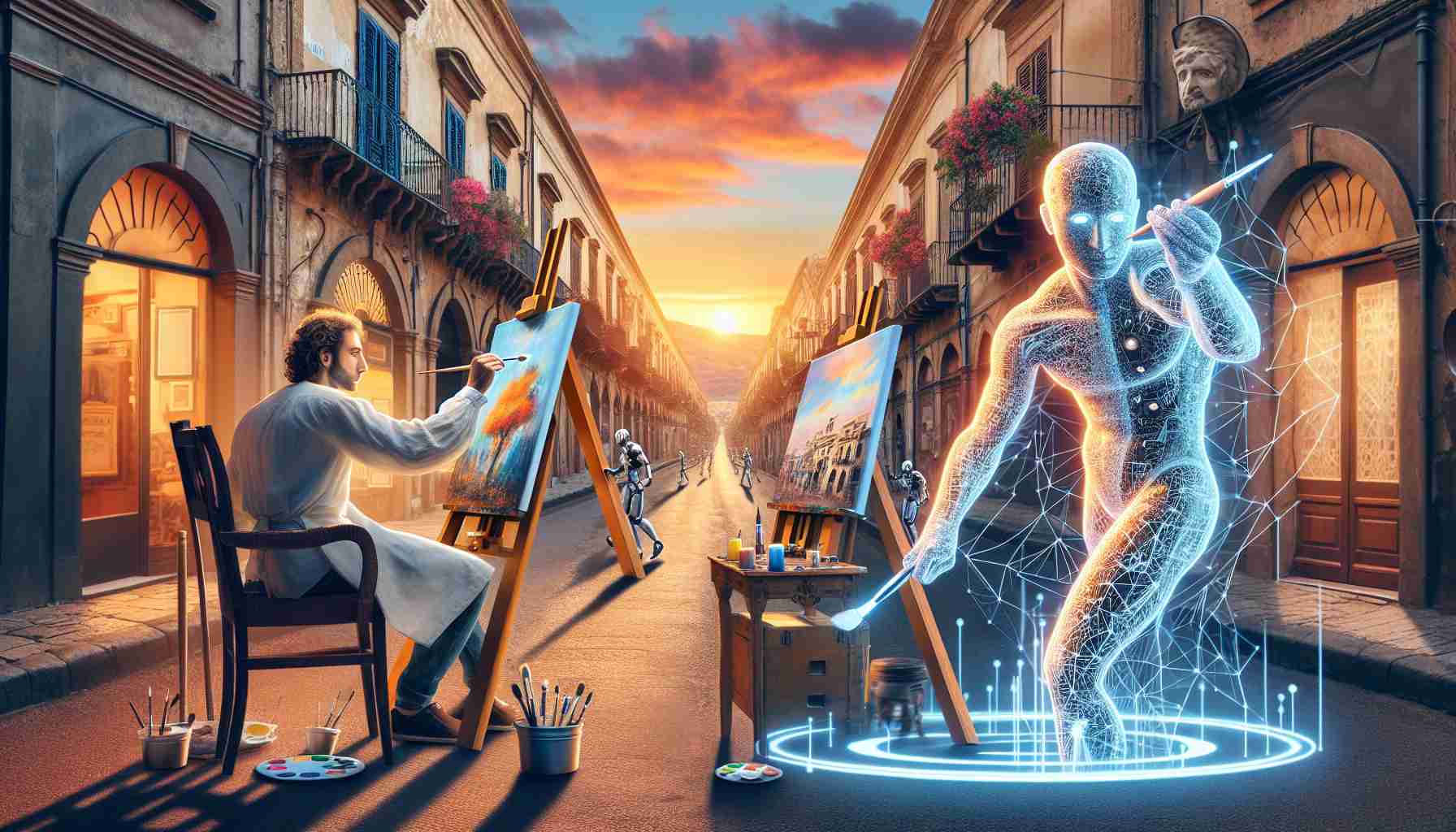A unique showcase of human creativity in art was hosted in the Santa Maria Alemanna church in Messina, where renowned artist Dimitri Salonia, founder of the Sicilian Coloristic School, went brush-to-brush against generative artificial intelligence (AI) in a fascinating artistic challenge.
Salonia, known for his vibrant and emotionally rich compositions, collaborated with his student Lidia Monachino to create a novel rendition of a familiar theme—a bustling market scene. His ‘informal figurative impressionistic’ style, marked by vivid colors and distinctive strokes, not only reaffirmed the irreplaceable value of human inspiration over algorithmic prowess but also sparked a profound contemplation on art and creativity’s place in an era dominated by technological innovation. His works reflect an alchemy of intense, contrasting emotions, capturing the viewer’s soul and unveiling a parallel universe of color—one that transcends words and conventions.
A competitive edge was drawn as the AI, prompted by biomedical engineer Gaia Roccaforte from the Institute of Biomedical Research and Innovation (Cnr-Irib) of Messina, produced an artwork in line with the selected style and theme. While formally impressive, Roccaforte admitted that in the realm of art, AI will continue to evolve to become more collaborative with humans, eventually able to convey emotions and essential information.
Insights on the future of AI in healthcare were shared during the Coffee Talk, with Cnr-Irib’s Giovanni Pioggia and COT’s Marco Ferlazzo delving into “Adapt-Mi,” an innovative project aimed at developing new AI-based algorithms for personalized medicine and rehabilitation. Representatives from various research and healthcare institutions, as well as AI and IT companies, underscored AI’s transformative role in medicine—from diagnostics to treatment and overall healthcare management.
The event, endorsed by the City of Messina and others, was an opportunity to herald the synergy between technology and humanity and to discuss the profound impact of AI across different fields.
Revelations from the Artistic Face-off
Artistic duel events like the one in Santa Maria Alemanna church in Messina often lead to important discussions about the role of AI in creative industries. While Dimitri Salonia and his student showcased human emotional depth and the alchemy of colors, the AI demonstrated that technology could mimic certain styles and themes. This leads to several key inquiries about creativity, authenticity, and the future of art.
Key Questions and Challenges
– Can AI truly be creative, or does it merely use programmed algorithms to generate art based on preexisting data sets?
– Does AI-generated art diminish the value of human-created art?
– How can artists distinguish themselves in a market that increasingly includes AI-generated works?
– What will be the ethical implications if AI-generated art is indistinguishable from human-made art?
Challenges and controversies often revolve around the definition of creativity and the economic implications for artists. Furthermore, issues of copyright and ownership of AI-generated content are yet to be comprehensively addressed.
Advantages and Disadvantages of AI in Art
The advantages of AI in art include:
– The ability to produce art at great speeds and in large quantities.
– Potential for collaboration whereby AI tools serve as an extension of the human artist’s capabilities.
– Opening up new styles and forms of art that might not have been possible before.
The disadvantages include:
– Potential devaluation of art due to a saturated market.
– Loss of personal touch and emotional depth that is often deeply connected to human artist-led works.
– Ethical concerns regarding the originality and authorship of AI-generated art.
Suggested Related Links
To learn more about the integration of AI in various fields, you can explore the following websites:
– Italian National Research Council (CNR)
– AI in Healthcare
This competitive edge in art signifies nascent opportunities and the inherent need for discussions on the role of AI in creative sectors. Events like the creative duel in Messina serve as a microcosm of the broader conversation on how artificial intelligence intersects with and augments human activities across diverse domains.
The source of the article is from the blog regiozottegem.be

